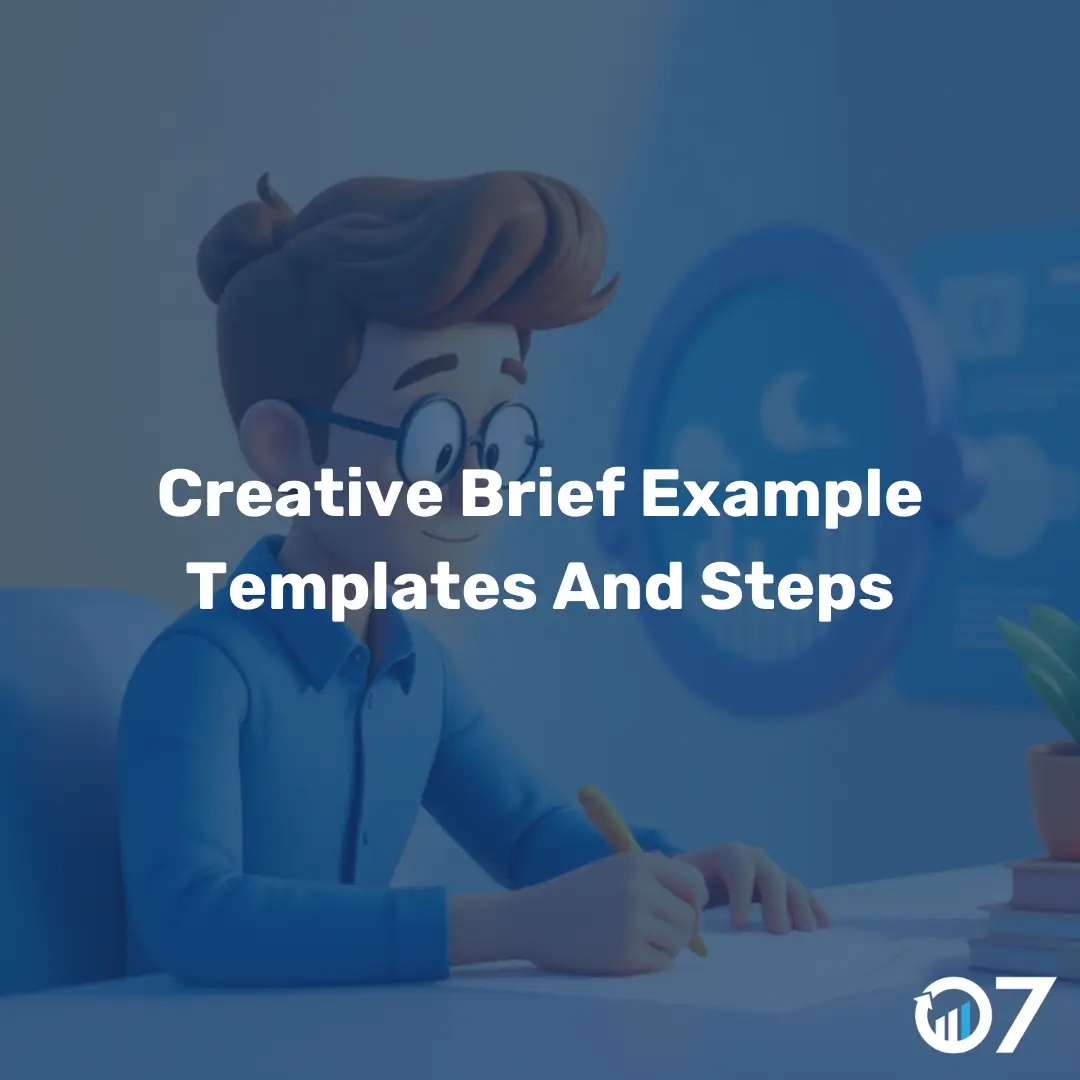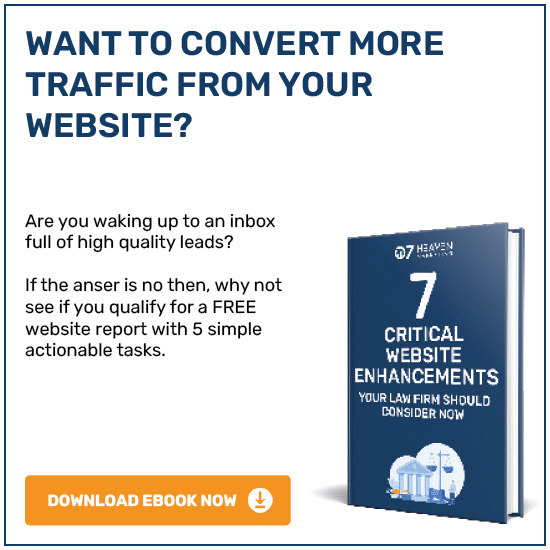Creative brief example templates are essential tools for business owners. They help streamline projects and ensure everyone is on the same page.
A creative brief is like a roadmap that guides your project from start to finish. It ensures clarity on the project’s scope, timeline, stakeholders, and objectives.
The creative brief is the single source of truth for everyone involved. If questions arise, the brief will steer things in the right direction.
The Purpose of a Creative Brief
Whether you’re pitching to a client or presenting to your team, start by talking with stakeholders. These discussions will clarify the company’s mission, project goals, and challenges. With this information, you can write a compelling brief that focuses on what’s important.
How a Creative Brief Works
Creative briefs are standard documents in marketing, advertising, or design teams. For smaller in-house projects, the brief is owned by the executing team. This is usually the creative team, but it can also be within the brand or marketing departments.
For more advanced, long-term projects involving an agency, the brief is owned by the creative team or agency. They work closely with stakeholders to understand needs and bring their expertise to the brief. Here’s how they work.
- Step 1. Teams needing assistance retrieve the creative brief template from a repository like OneDrive or Google Drive.
- Step 2. The requesting team completes the brief, explaining their needs and goals clearly.
- Step 3. The brief is sent back to the creative team for review, checking timelines, resources, and budget requirements.
- Step 4. If there are questions, the creative team finalises details with the requesting team.
- Step 5. The project kicks off, sometimes with a project manager, who keeps everything on schedule, within scope, and budget.
- Step 6. Once complete, both teams review the deliverables against the brief to ensure everything is correct.
The format of a company’s creative brief might vary to suit the project’s needs. Below is a simple outline that will be the foundation of your creative brief. It includes the most important steps and information relevant to stakeholders.
1. Decide on a name for the project
The first step is deciding on a project name. This might sound simple, but it’s critical. A few words or a short sentence should work fine. If you’re building a campaign around a new product or service, the campaign name will be the first time many team members are introduced to it. Without a specific and clear name, people will make up their own terminology.
If you’re launching a product, identify the call to action for the target audience and centre the name around that. Here are a few examples of fictional campaign names:
- Search for Adventure. A scavenger hunt-themed amusement park.
- Don’t Forget Your Memories. A photo frame company.
- What’s hotter than PepperCo hot sauce? A hot sauce brand.
2. Write about the brand and summarise the project’s background
If you work in an agency, including the company’s background is non-negotiable. But even for in-house projects, include this info for new hires, freelancers, and vendors. Tailor this to the project at hand. It shouldn’t be a general history of the company. Set the scene with one or two sentences that sum up the brand’s mission. Follow this with a few sentences that give background on the brand and what led to the project’s development.
Here are some questions to consider when writing a company background:
- Has the company launched a campaign like this before?
- Why is the company choosing to launch this campaign now?
- What’s happening in the market and how will this campaign respond to it?
3. Highlight the project objective
Here is where the creative brief gets more specific. The project objective should briefly explain the project’s purpose, timeline, and target audience. This can be done in a sentence or two. Emphasise why the project needs to happen. Explain what a successful project looks like and how it will benefit the company. If the company or client hasn’t identified any major challenges, focus this section on goals and objectives.
Writing a project objective is similar to writing a goal. Here’s an example using a template that offers separate sections for the problem and goals.
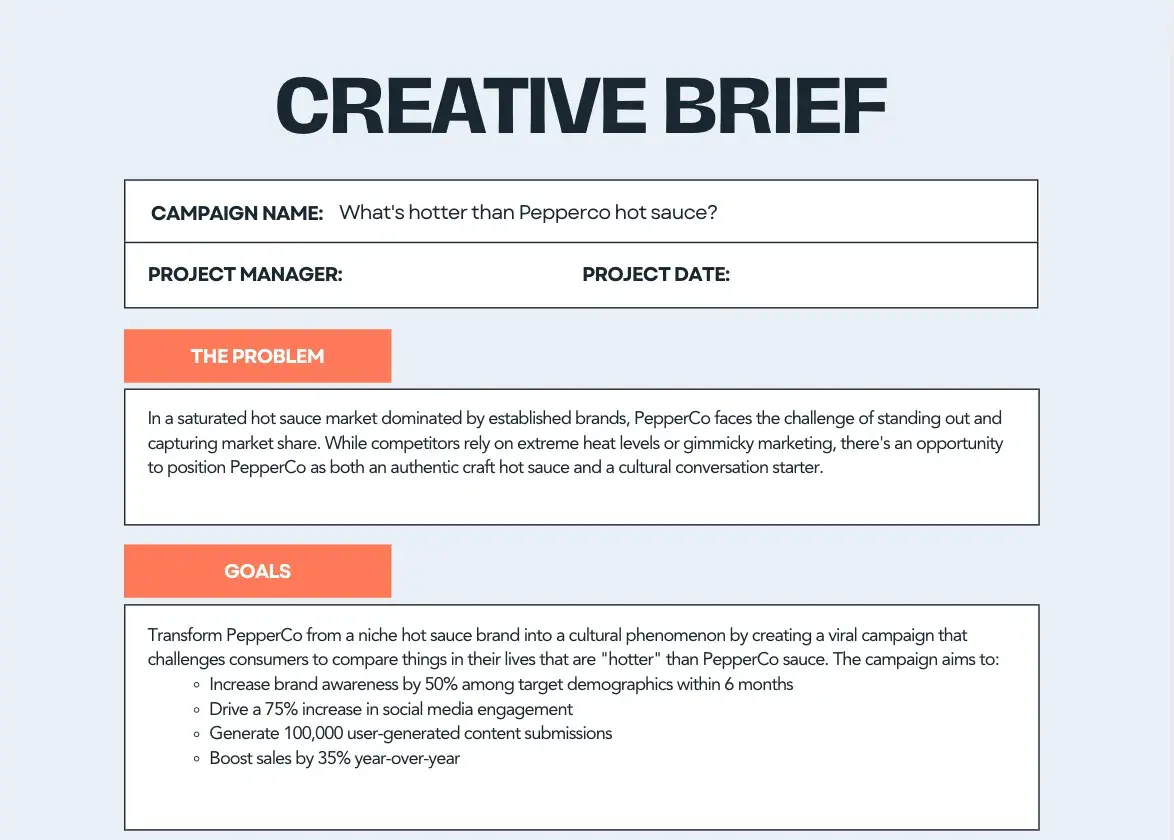
4. Describe the target audience
Next, define your project’s target audience. This is the segment of your market that will benefit from the product or service you’re launching. You can take audience segmentation a step further by identifying a primary and secondary audience. This gives your team more freedom to explore creative ideas that might resonate with one group more than the other.
When crafting the target audience section, include the following:
- Demographics. This includes data points like age, income, education, ethnicity, and occupation.
- Behaviours. Buying behaviours, trends, and other customer history make up target audience behaviours.
- Psychographics. This is how the audience thinks and feels about your brand and the product or service you sell.
- Geographics. Digital, physical, and hybrid campaigns benefit from having geographics stated explicitly.
Your creative brief shouldn’t be too long, and this section can take up quite a bit of space. To make this section more digestible, consider using buyer personas. Here’s how I explained a new product’s target audience in the example above:

5. Interpret the competitive landscape
Knowing what your competitors are doing is advantageous for the whole team. You can use competitive data to come up with new ideas, learn from their failed projects, or build a project that improves on a strategy they’ve used. Include a quick list of competitors with similar product or service offerings. Briefly list a few things your company has in common with them, how your brand has differentiated itself already, and a few areas where this project can help you get ahead.
6. Prepare the key message
Developing the key message can be the most difficult part of the creative brief because stakeholders may have differing opinions. The key message includes the pain point, what the audience’s experience might be like without the pain point, and the benefit they‘ll receive as a result of your company’s solution. This framework places the customer in the campaign’s spotlight. Instead of telling them what this product or service could do for them, it positions them as the main character in the journey from problem to solution.
To get buy-in faster, try this simple trick. Ask yourself, “We’re launching this project, so what?” The “so what?” is your key message. It explains why your target audience should stop what they’re doing and pay attention to your campaign.
7. Define the key consumer benefit
If you‘re launching a new product, there are likely several features and benefits that the target audience will experience. However, it’s very difficult to structure a campaign around several different features. That’s why marketers and creatives use something called a key consumer benefit (KCB) in the creative brief to keep everyone aligned on the primary benefit being communicated. To choose the right KCB, get input from the project stakeholders and rely on consumer data to guide the decision.
Your KCB won’t always be the fanciest feature of your product. The benefit that solves the biggest problem for your audience is a great choice for the KCB.
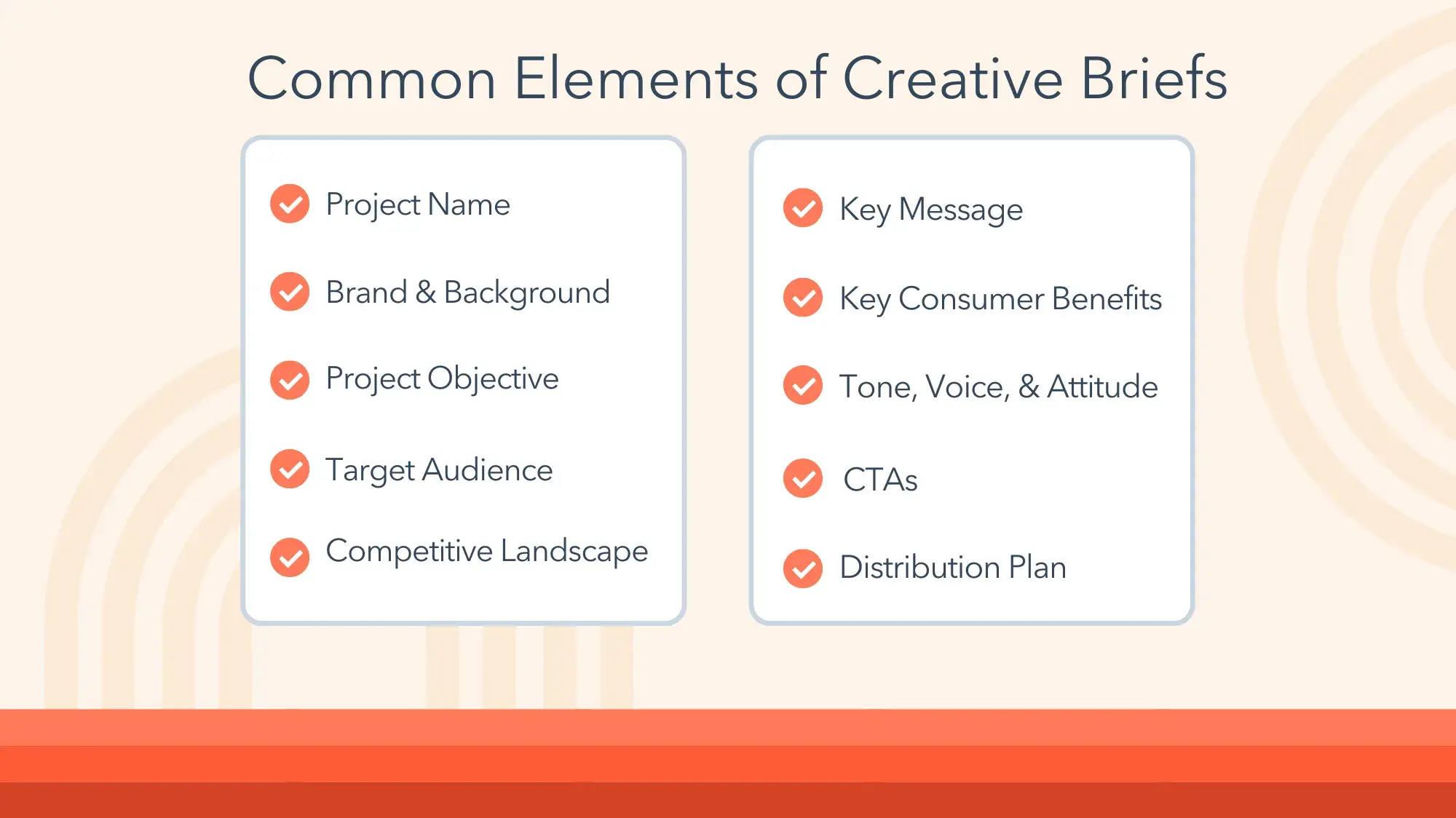
8. Select an attitude
The tone and voice of your campaign create the overall attitude, which should be consistent throughout every creative element. Identify a few adjectives that describe the attitude of the campaign. This can help copywriters draft copy that sends the correct message within the right context. Graphic designers can use colours and techniques to bring the attitude to life. Note the appropriate voice for your audience. While some audiences, like those in the business world, prefer more formal language, others might engage more with a casual, relatable tone.
Use a thesaurus to find specific words that evoke nuanced emotions and attitudes for a hyper-targeted campaign.
9. Determine the best call to action
Your audience needs something to do once they see your campaign. A CTA doesn’t have to be a physical action. It could aim to change thoughts and perceptions about your brand. Your creative brief might include several different CTAs, especially if you have a primary and secondary target audience. But it’s a good idea to have one primary CTA that drives the project objective we talked about earlier.
10. Draft the distribution plan
When the project is done, you’ll need to make sure your audience actually sees it. List a few channels or platforms on which you plan to announce the launch. Think about your target audience. Don’t waste time on a promotional strategy they won’t see. For example, if you’re promoting a project to Gen Z, you’ll want to invest in social media rather than billboards or newspaper ads.
11. Share the creative brief with stakeholders
Once you’ve drafted a creative brief, share it with the team you’ll be working with. You’ll also want to circulate it around the company via Slack, email, or presentations. If you’re an outside consultant, encourage your clients to share the brief internally. As you or your clients spread awareness, be open to answering questions or taking feedback from colleagues in case they have any great ideas. This strategy will improve team alignment, increase support of the project, and ensure that all of your colleagues are on the same page.
Having trouble with the flow and organisation of your brief? Here are simple templates that could help. Copy and paste into a document and fill in the blanks. You can also add to the templates or adjust them as needed for your project.
Creative Brief Examples and Templates
[Insert company or client logo at the top along with the project name.]
COMPANY BACKGROUND:
For ___ years, ______ [Brand Name] has been serving customers in the ____________ [group/job field/geographical area] with ____________________ [product or service].
[Brand Name] has made achievements including __________,__________, and ___________. We have also launched marketing campaigns that have touched on ____________,________, and ____________. With the launch of _________ [project name] they hope to ___________.
PROJECT OBJECTIVE:
With this project, the company aims to solve problems related to ____________________, while also expanding on ___________ and improving on _____________.
TARGET AUDIENCE:
Our target audience is ____ [gender], in the age range of _ and _, and live areas like ____, _____, and ______. They enjoy _____, dislike ______, and might work in fields like _____, _____, and _____. They want more of ________ and their daily pain points include ________.
Their favourite products might include _______ and ______. They learn about these products through channels including ________, _________, and _______.
COMPETITORS:
Our three biggest competitors [are/will be] ________, ________, and _______. These competitors offer _____, ______, and ______. We are ahead of them in _____ and ______, but we are behind when it comes to product offerings like __________ and _________.
KEY MESSAGE:
The target audience is experiencing __________ [pain point], but with our newest project ___________, they‘ll get to experience _________ [new experience without the pain point]. That’s what makes ______ [solution] an unrivalled solution within the market.
KEY CONSUMER BENEFIT:
________ [feature] is the best way for our target audience to experience _____ [benefit].
ATTITUDE:
[Include three to five adjectives that describe the tone and voice of the project.]
CALL TO ACTION:
When the target audience sees our campaign, they will [feel/think/do] _________.
DISTRIBUTION:
We will promote the launch on platforms and channels that our demographic regularly engages with. These will include ________, ________, and _______. We will also release content including _______, _______, and ________ to gain attention from our audience and inform them of the project.
Below are a few messages we will use:
- _________________________________________________.
- _________________________________________________.
- _________________________________________________.
Here are more templates to consider:
1. Simple Campaign Creative Brief Example
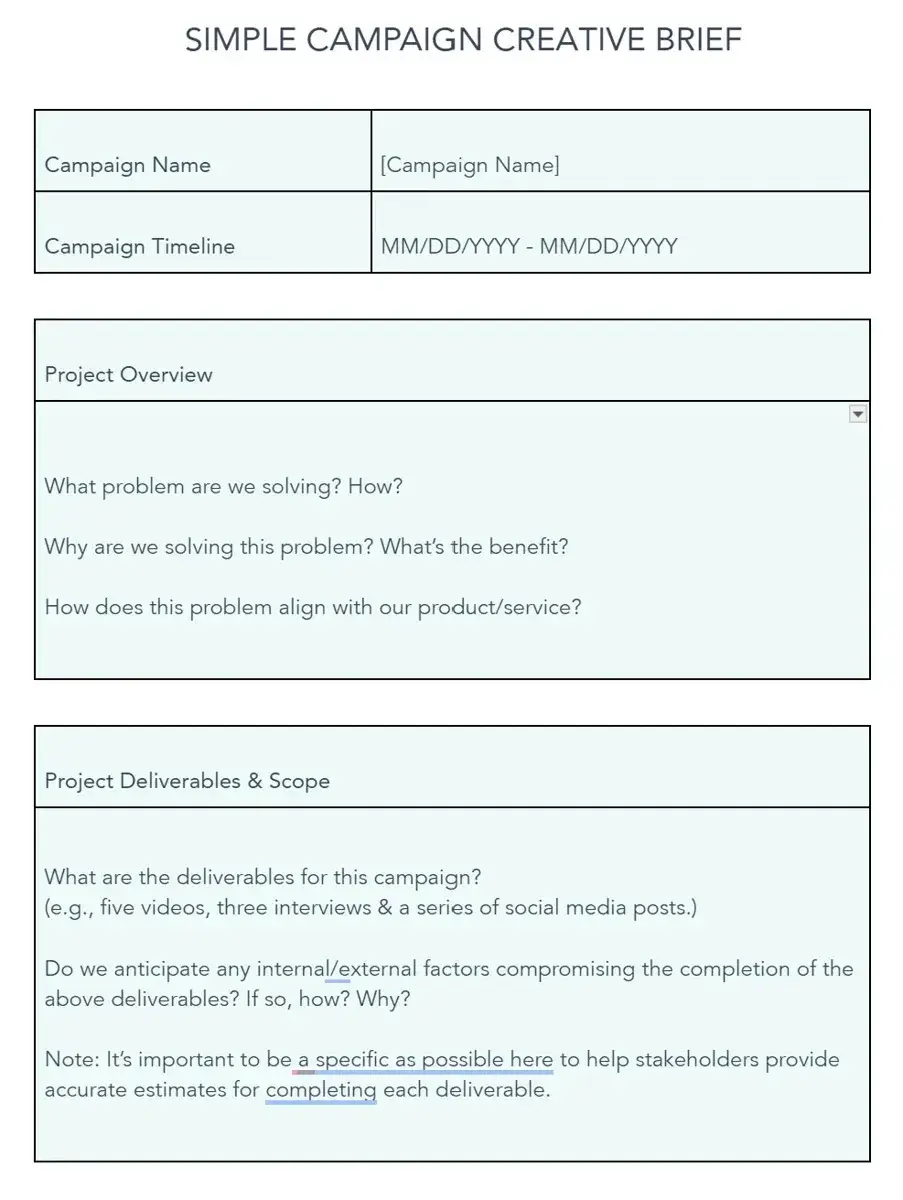
This creative brief is straightforward and simple. The only eye-catching visual is the use of the brand’s logo. However, all the necessary information is included.
2. Video Creative Brief Example
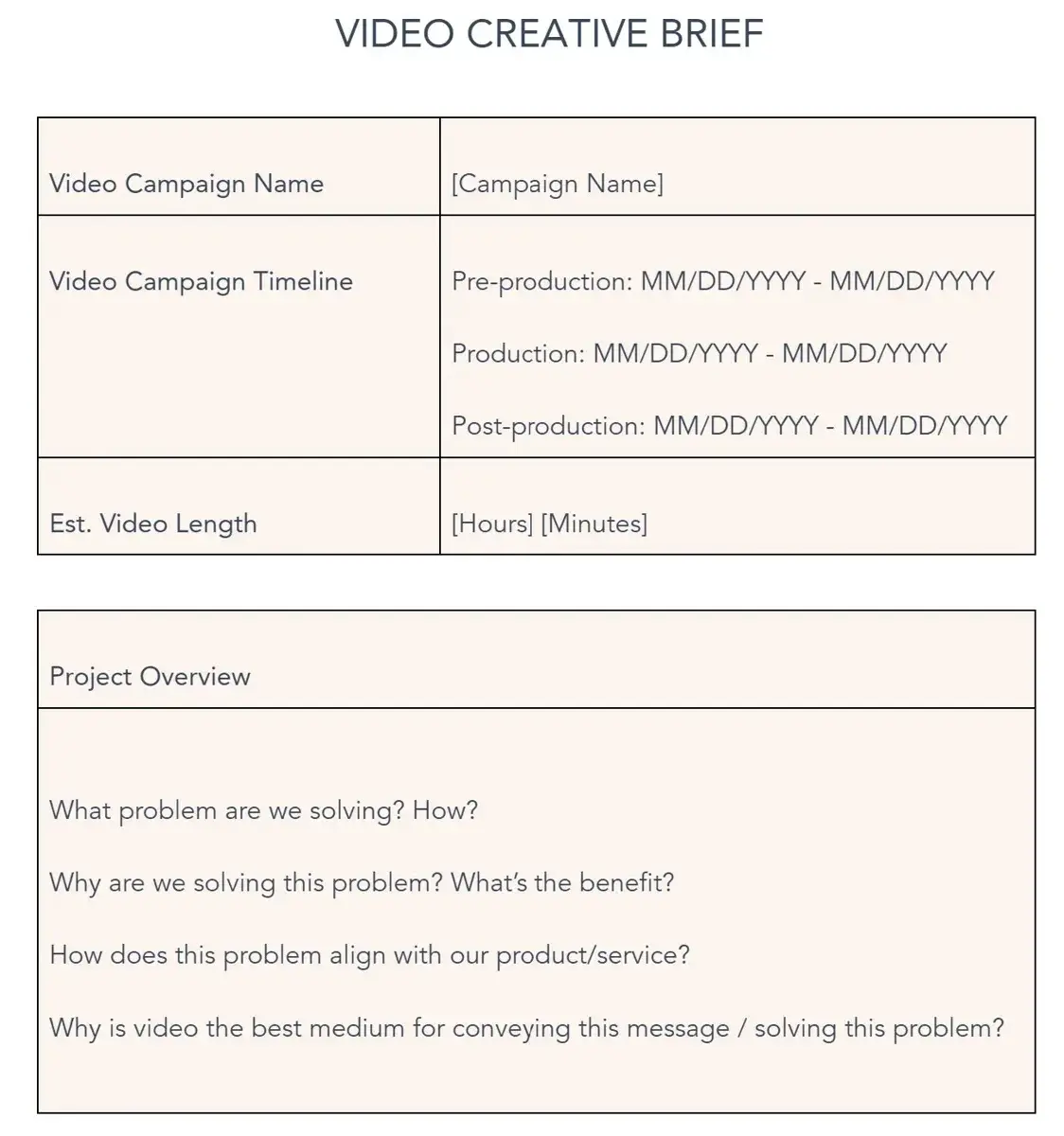
This creative brief template was designed for video projects. It’s a visual-forward example that works well for long-term projects like building a business or refreshing a brand.
3. Simple Client Creative Brief Example
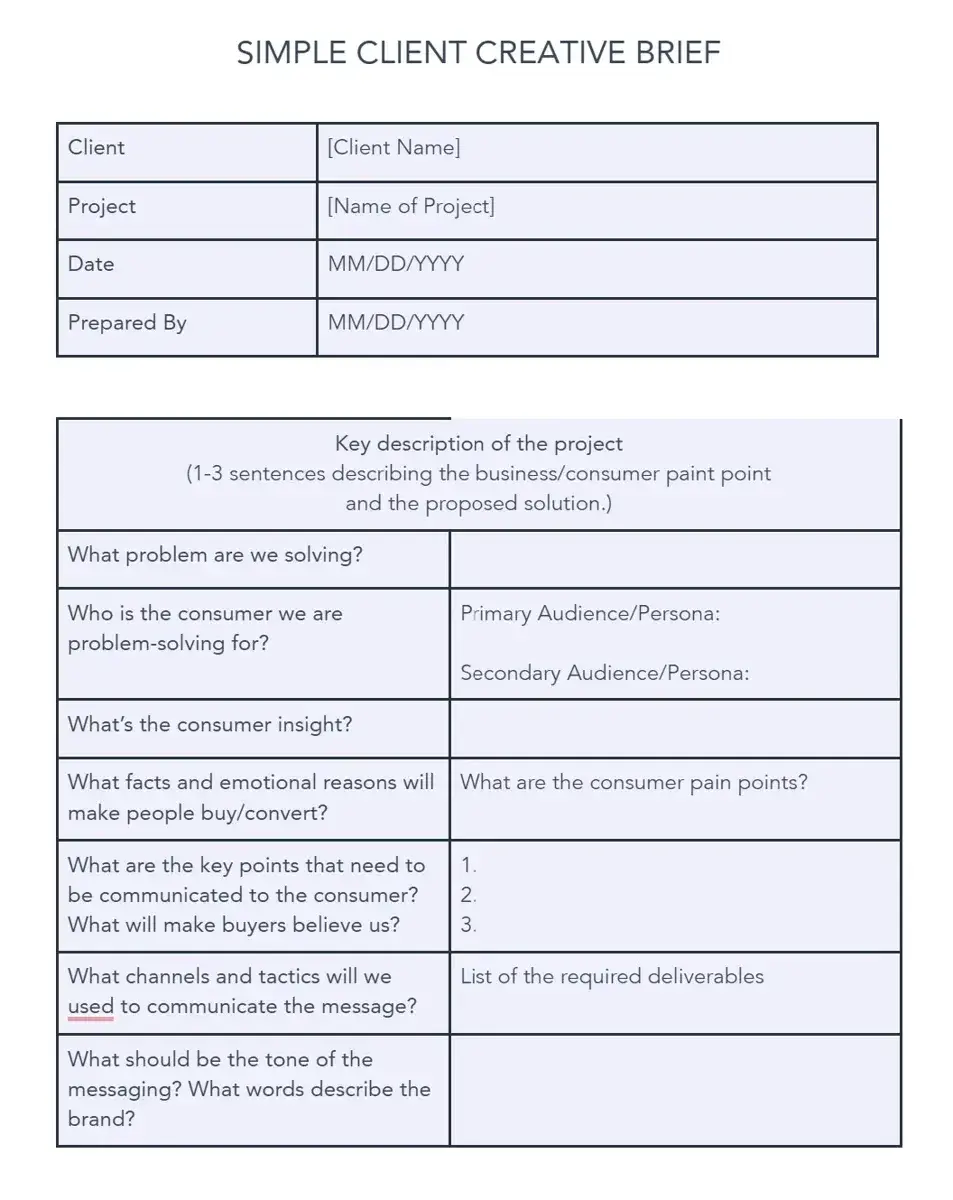
This longer brief includes information like internal brand insights and external competitive analyses. Use this creative brief when you’re partnering with a creative agency on bigger projects.
4. Infographic-style Creative Brief Example

This infographic-style creative brief lays out the brand‘s problem, plan, and guidelines. It includes visually appealing graphics to drive home the brief’s point.
5. Creative Request Brief Template

This template lets graphic designers gather important information from clients. It helps them create a product that aligns with the client’s vision.
6. Canva Creative Brief Example
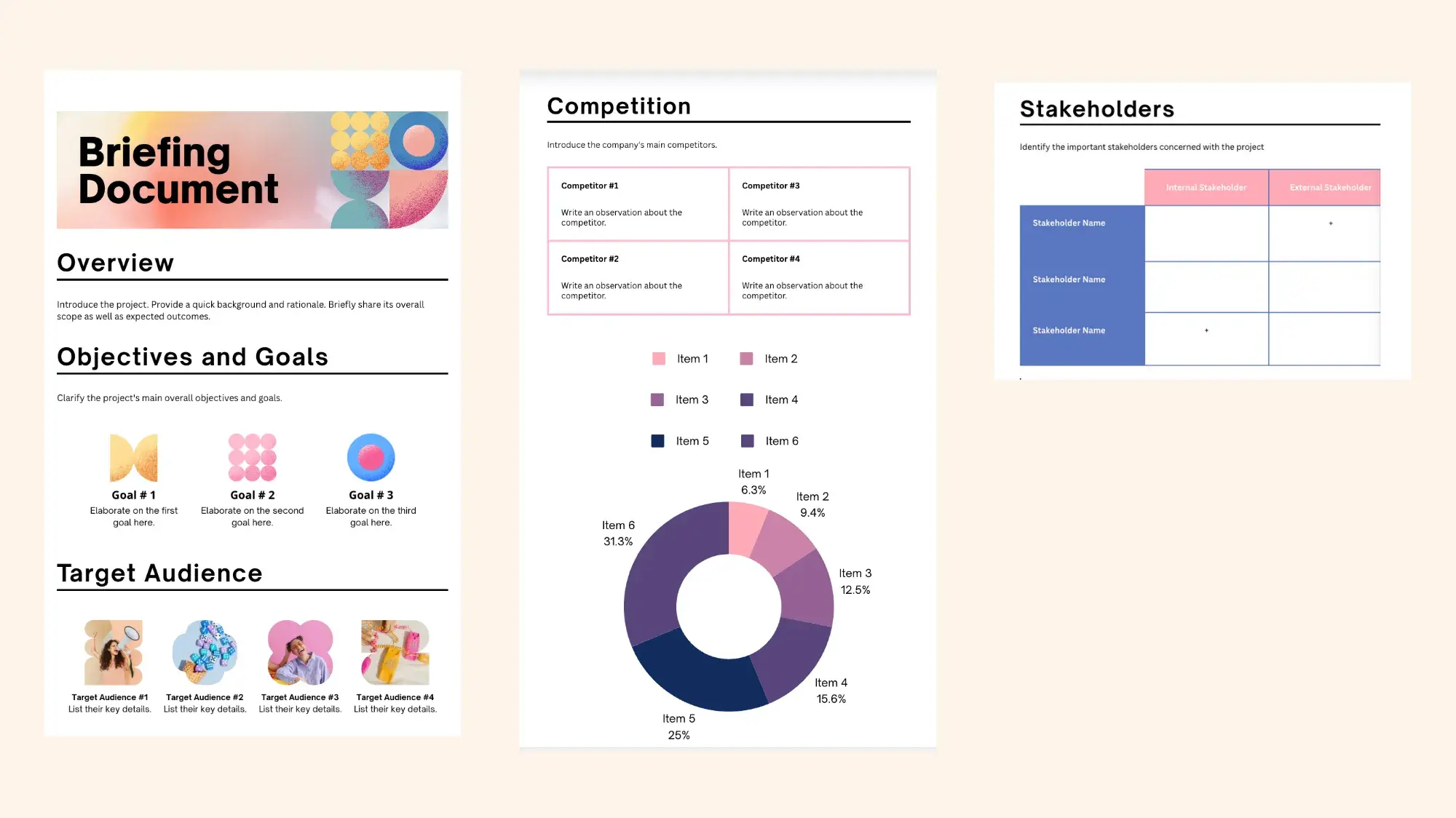
This creative brief example on Canva puts the most important elements on one long page with lots of white space. It’s also very graphics-heavy, adding visual interest and making it a pleasure to skim.
Creative Brief Examples To Help
Scope creep happens to the best of us. Projects get bigger, stakeholders are added, and the objective of the project seems to morph. Streamline your next product launch or marketing and advertising campaign with using one of our creative brief example. As a result, you‘ll find that your team is more aligned with the project’s goals.
For more insights, visit our blog or contact us via email or telephone at 01702 410663.

